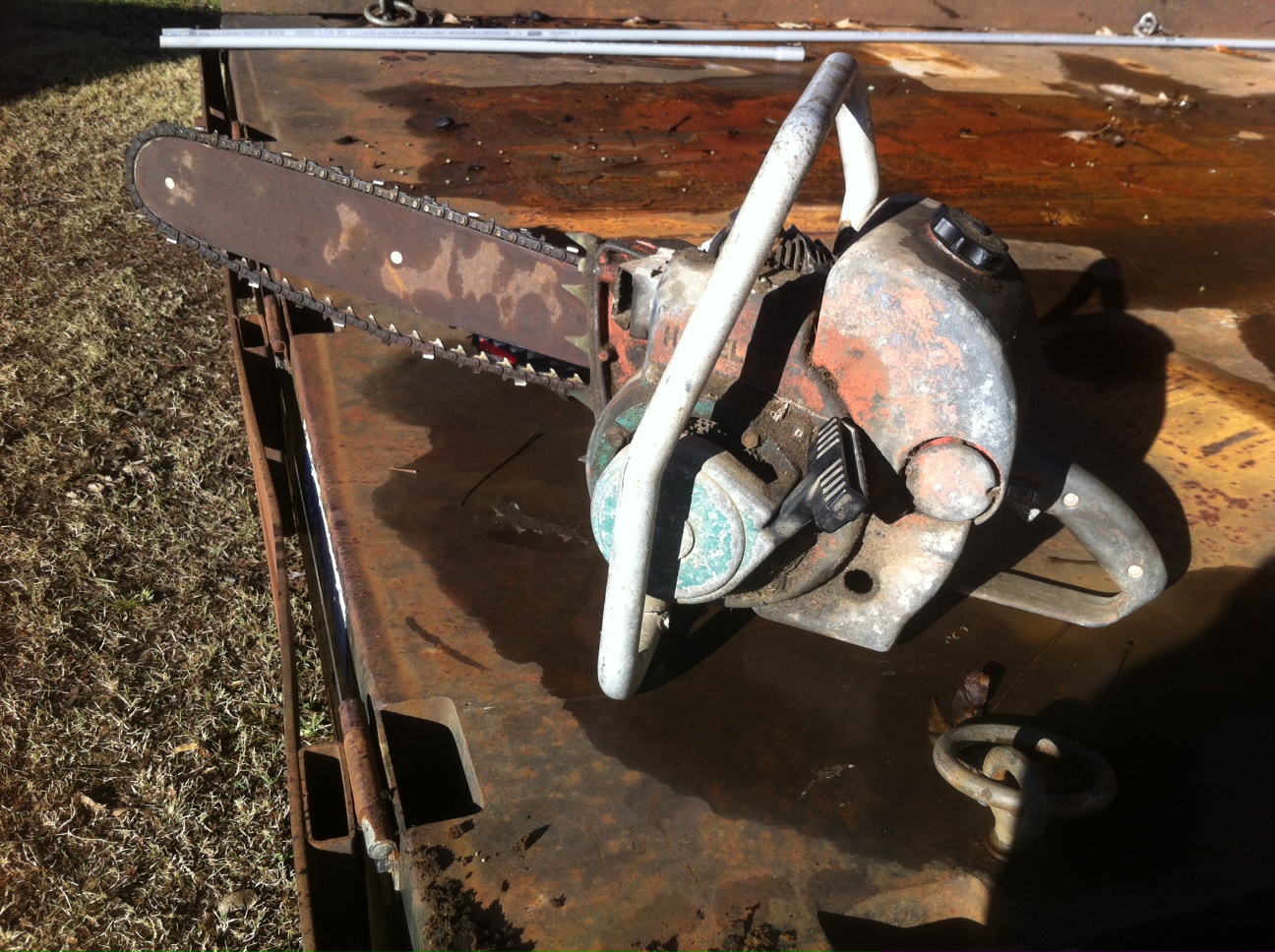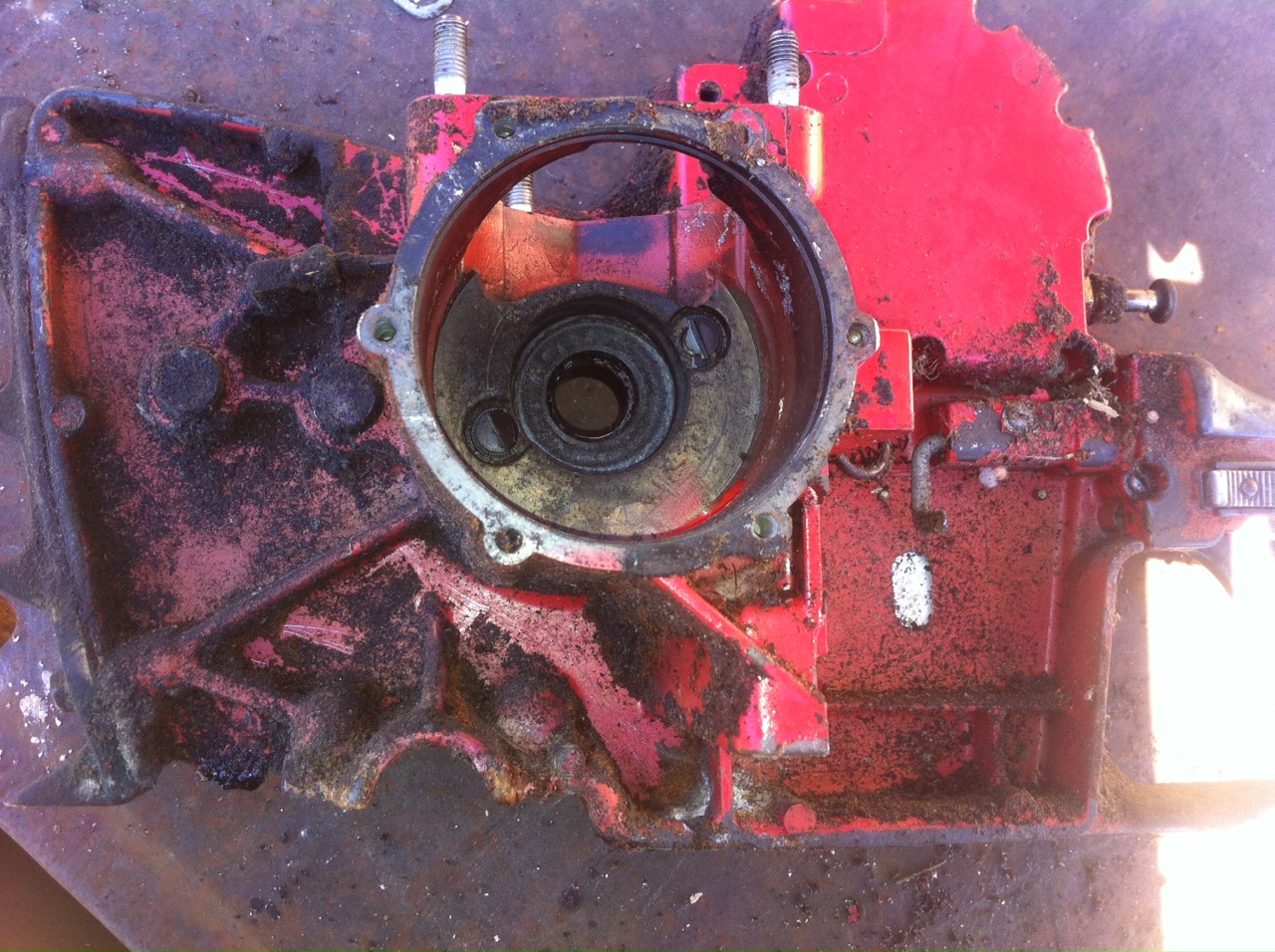Hi all, I had a whoops kind of moment when disassembling my Homelite 600D. Got it at an antique show a week ago for $40 so I'm not too concerned about having so much money tied up in it. I've been wanting to try to restore an old saw, and this is probably the best candidate for that I've run across yet. Been sitting in a barn for 30 years, and it looks the part too.

So I get to taking the thing apart. Its pretty beat, but all there. It didn't have a spark, because the points were filthy, anyway i get down to the crankshaft. I didn't really want to remove the crank but I plan to paint it so it kinda has to go. You all know the saying "If at first you don't succeed, get a bigger hammer" and so I did. Crank comes out as expected. But there's these strange rivet things that Icouldn't see didn't know to look for behind the crank counterweight, holding the bearing in. Let's just saw that those rivet things aren't holding much anything anymore.

The broken things inside the crankcase, next to the bearing counterbore. There is no bolt head, or screw slot on them at all, so I'm not entirely sure that they thread in at all. They were in a groove in the outer race of the bearing. I'm not sure how important they are, and therefore if I just made a nice box of parts. I'm leaning towards believing that those pin things were pressed in with the bearing, and they are simply insurance that the bearing doesn't move. Maybe they thought that the interference fit on the bearing might not be enough, and in 1960, Loctite 609 wasn't a thing yet. Any Ideas?
Thanks

So I get to taking the thing apart. Its pretty beat, but all there. It didn't have a spark, because the points were filthy, anyway i get down to the crankshaft. I didn't really want to remove the crank but I plan to paint it so it kinda has to go. You all know the saying "If at first you don't succeed, get a bigger hammer" and so I did. Crank comes out as expected. But there's these strange rivet things that I

The broken things inside the crankcase, next to the bearing counterbore. There is no bolt head, or screw slot on them at all, so I'm not entirely sure that they thread in at all. They were in a groove in the outer race of the bearing. I'm not sure how important they are, and therefore if I just made a nice box of parts. I'm leaning towards believing that those pin things were pressed in with the bearing, and they are simply insurance that the bearing doesn't move. Maybe they thought that the interference fit on the bearing might not be enough, and in 1960, Loctite 609 wasn't a thing yet. Any Ideas?
Thanks


























































